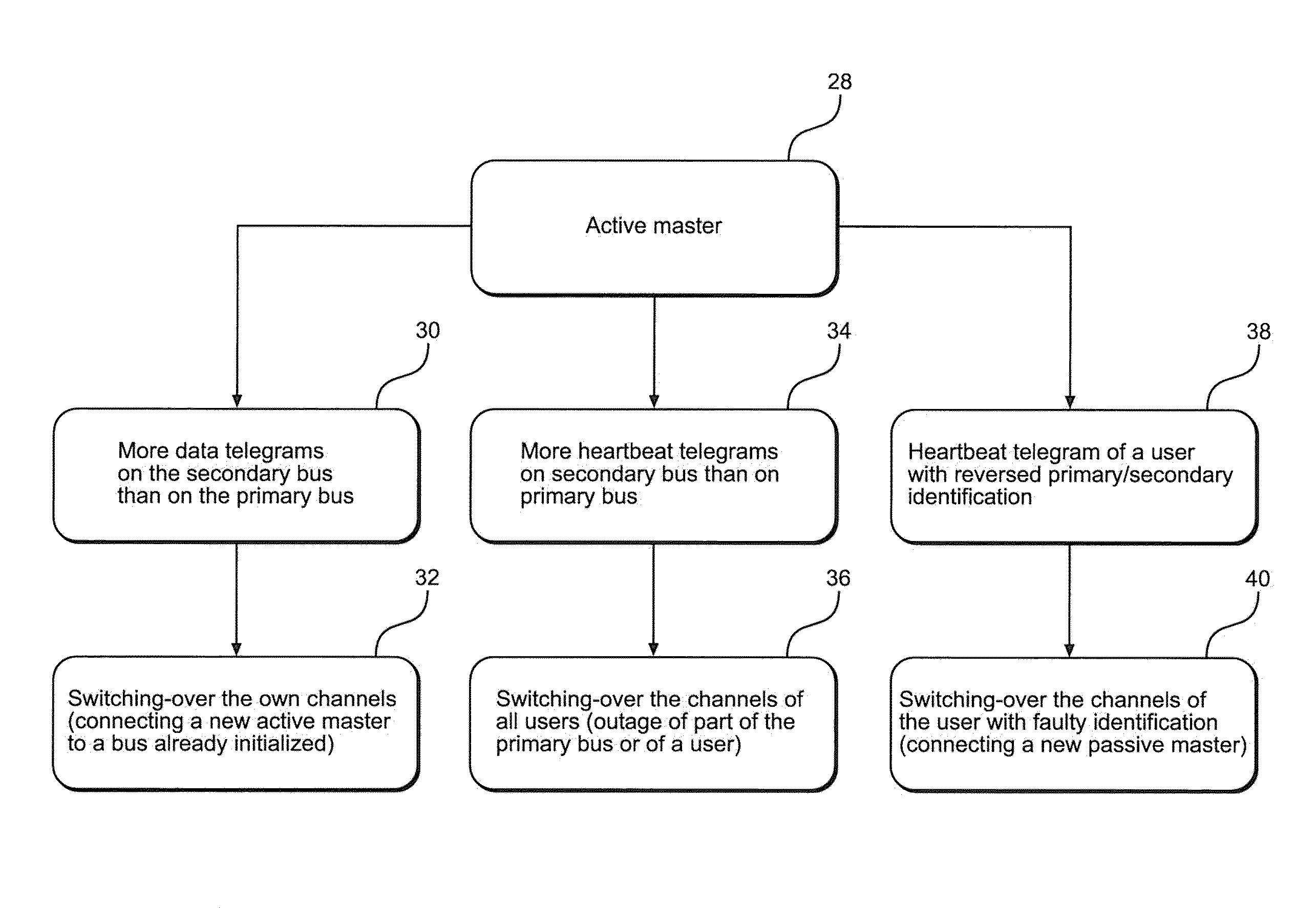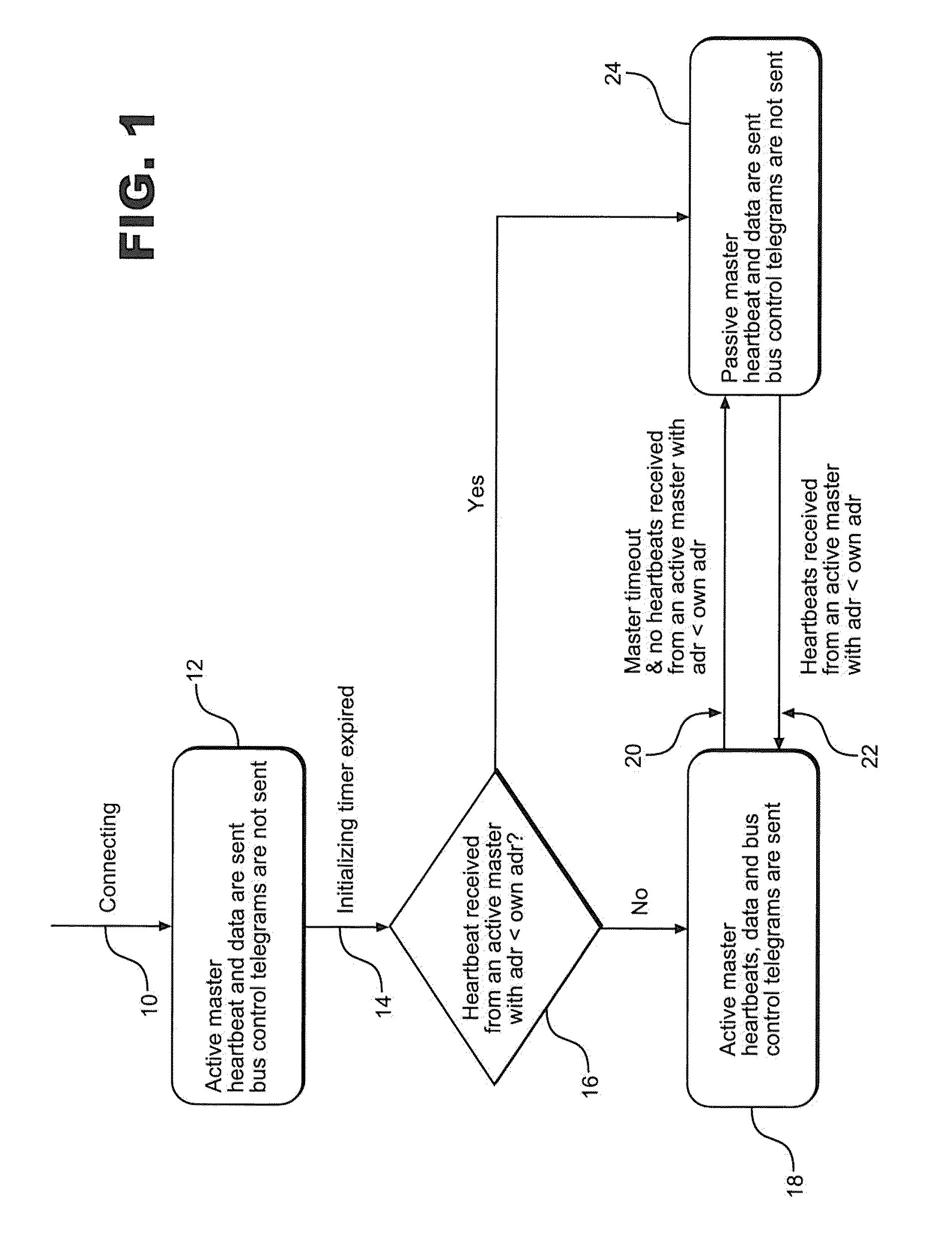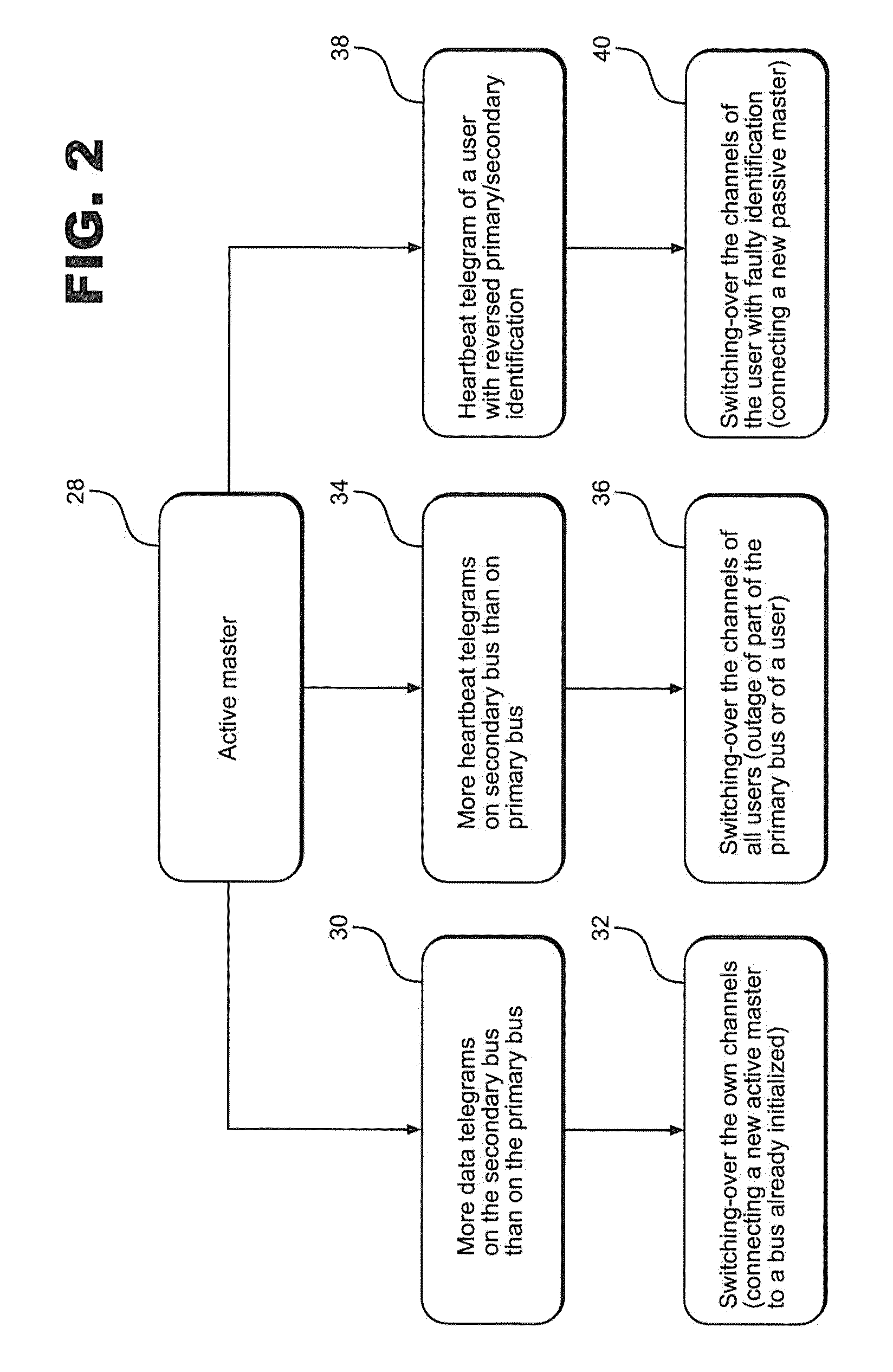Ship Rudder Control (Autopilot) with a CAN Bus
a can bus and rudder technology, applied in the direction of steering components, floating buildings, transmission, etc., can solve the problems of single component failure, large overhead in information transmission, and the inability to use two data buses simultaneously, so as to avoid contradictory information from being transmitted
- Summary
- Abstract
- Description
- Claims
- Application Information
AI Technical Summary
Benefits of technology
Problems solved by technology
Method used
Image
Examples
Embodiment Construction
[0019]The bus system that is to ensure the redundancy of the data transmission within a ship rudder control system via a CAN bus, will thus exhibit in each case two identical bus interfaces. According to the state of the system, one user assumes the monitoring function, that is to say, the monitoring function is not firmly coupled to one user. The two bus channels have a fixed designation on each connected node: the so-called channel number Channel 1, Channel 2.
[0020]These channel numbers are assigned in the software (or by configuration in a service mode (in no case in the user mode), one hardware interface receiving the designation Channel A, and the other is Channel B. The choice, which two hardware interfaces are interconnected, is free. It is possible to set up several instances of the Advanced Redundancy Dual Bus within software. Both channels have a defined channel status: Primary Channel or Secondary Channel. These two items of status information are also transmitted in a he...
PUM
 Login to View More
Login to View More Abstract
Description
Claims
Application Information
 Login to View More
Login to View More - R&D
- Intellectual Property
- Life Sciences
- Materials
- Tech Scout
- Unparalleled Data Quality
- Higher Quality Content
- 60% Fewer Hallucinations
Browse by: Latest US Patents, China's latest patents, Technical Efficacy Thesaurus, Application Domain, Technology Topic, Popular Technical Reports.
© 2025 PatSnap. All rights reserved.Legal|Privacy policy|Modern Slavery Act Transparency Statement|Sitemap|About US| Contact US: help@patsnap.com



